Information
Seoul, Korea
- HOME
- Information
- Seoul, Korea
About Korea
National Flag
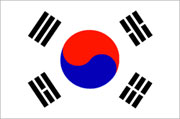
The Korean flag is called "Taegeukgi". The design symbolizes the principles of the yin and yang in Asian philosophy. The circle in the center of the flag is divided into two equal parts. The red half represents the proactive cosmic forces of the yang. Conversely, the blue half represents the responsive cosmic forces of the yin. The two forces together embody the concepts of continual movement, balance, and harmony that characterize the sphere of infinity. The circle is surrounded by four trigrams, one in each corner. Each trigram symbolizes one of the four universal elements: Heaven, Earth, Fire and Water.
National Flower
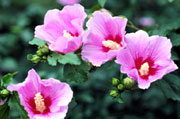
The national flower of Korea is the mugunghwa (Rose of Sharon). Every year from July to October, a profusion of mugunghwa blossoms graces the entire country. The flower’s symbolic significance stems from the Korean word mugung (immortality).
Weather
-
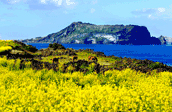
SPRING In late March or early April, the trees burst into leafy splendor to mark the beginning of spring. Mostly sunny days can be expected from March to May. -

SUMMER During the relatively hot and rainy summer season, the vegetation is lush. By June the average temperature is over 20°C(68°F) Monsoon rains usually begin around the end of June and last until mid-to-late July. August is hot and humid. -
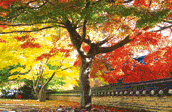
AUTUMN The coming of autumn in late September brings continental winds and clear, dry weather, making these months perhaps the most pleasant time of year. October's vivid gold and vibrant red create a colorful panorama. -
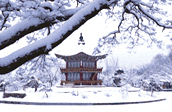
WINTER December to February is cold and dry with occasional snow. During the winter months, three or four days of cold weather are often followed by a few warmer days.
Religion
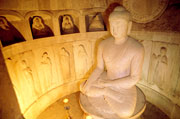
Freedom of religion is fully guaranteed in the Republic of Korea. Korea’s traditional religions-Shamanism, Buddhism and Confucianism have played an integral role in the country’s sociocultural development. Christianity has developed a large following since its introduction to the peninsula in the late 18th century.
Language
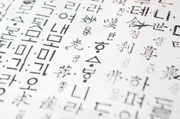
The Korean language like Hungarian, Turkish, Mongolian and Finnish, is classified into the Ural-Altaic language group. Hangeul (the Korean alphabet) is composed of 10 simple vowels and 14 consonants. A group of scholars under the patronage of King Sejong the Great developed this systematic rendition of spoken sound in 1443. It is widely acclaimed by linguists as an ingenious invention. In 2009, the town of Bau-Bau, in Sulawesi, Indonesia adopted Hangeul as their official written language.
Attractions of Korea
Palaces

Seoul had been the capital of the Josun Dynasty for 500 years and has five major palaces. Gyeonbokgung and Changdukgung best represent Korean history and tradition. Gyeongbokgung was the main palace of the Josun dynasty. Gyeongheoroo(pavillion) and Guenjungjun(traditional building) are important heritages of the dynasty. Also, beside Gyeongbokgung, there are two impressive traditional museums, the National Palace Museum of Korea and the National Folk Museum of Korea. Changdukgung is famous for its beautiful attached secret garden called “Biwon” and unique blue roof tiles (Chunggiwa).
UNESCO Designated Sights

Seongsan Ilchulbong Peak rose from under the sea in a volcanic eruption over 100,000 years ago. Located on the eastern end of Jeju Island, there is a huge crater at the top of Seongsan Ilchulbong Peak. The sunrise from the crater is magnificent. Also the Seongsan Ilchulbong Peak surrounded by bright yellow colored rapeseed flowers in the spring is truly a sight to behold. Manjanggul Cave is one of the finest lava tunnels in the world, and is a designated natural monument. A lava tunnel is formed when the lava that was deep in the ground spouts from the peak and flows to the surface. Manjanggul Cave has a variety of interesting structures inside including 70cm lava stalagmites and the lava tube tunnels.
20 National Parks

There are 20 national parks in Korea for you to choose from, including three marine parks. The first designated national park also happens to be the largest, Jirisan National park located in the southwest. Parks are home to a variety of wildlife, and have been kept in remarkably pristine condition.
Traditional Markets & Shopping

Korean people would traditionally go to these markets to pick up day-to-day items like apparel, agricultural and marine products, bedding, and handicrafts. Oiljang Markets are held every 5 days and are full of lots of exciting scenes that make for great sightseeing and photography. For a large scale market that is always open, try Namdaemun Market. Shopping in and around the areas of Insadong and Samcheong-dong is a truly unique experience and one very different from the congested neighboring areas of Namdaemun, Dongdaemun and Myeong-dong. Gone are the flickering neon lights, teeming stalls and looming department stores in favor for quieter, cozier shops much more traditional in design. Insadong, long since regarded as the place to come to for artwork and antiques, is a great place to enjoy the afternoon combing store front windows and alleyways for all things authentically Korean.



